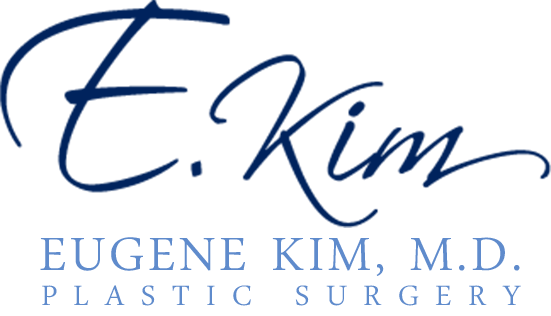 Breast augmentation, a popular procedure chosen by many to enhance body contour and boost self-confidence, can sometimes lead to unexpected outcomes. One such issue that patients may encounter is the double bubble deformity. This complication can affect the aesthetic results of the surgery, leading to dissatisfaction and the need for revision procedures. Understanding the causes of a double bubble after breast surgery can help in prevention and better management if it arises. Board certified plastic surgeon Dr. Eugene Kim provides treatment of double bubble to patients in Beverly Hills, Los Angeles, Santa Monica, West Hollywood, CA, and surrounding communities.
Breast augmentation, a popular procedure chosen by many to enhance body contour and boost self-confidence, can sometimes lead to unexpected outcomes. One such issue that patients may encounter is the double bubble deformity. This complication can affect the aesthetic results of the surgery, leading to dissatisfaction and the need for revision procedures. Understanding the causes of a double bubble after breast surgery can help in prevention and better management if it arises. Board certified plastic surgeon Dr. Eugene Kim provides treatment of double bubble to patients in Beverly Hills, Los Angeles, Santa Monica, West Hollywood, CA, and surrounding communities.
What Is Double Bubble Deformity?
The term “double bubble” describes a specific type of breast deformity that can occur after breast augmentation surgery. This issue manifests as an additional crease forming beneath the breast implant, creating the appearance of two distinct folds or bubbles. This condition disrupts the smooth, natural contour that breast implants are designed to provide. Generally, the double bubble effect is more noticeable when standing and may become less apparent when lying down.
Double bubble deformity affects the overall symmetry and aesthetics of the breasts. The deformity can be influenced by multiple factors, including the patient’s unique anatomy and the surgical technique employed. Understanding what a double bubble looks like and how it forms is critical for both patients and surgeons aiming for optimal aesthetic results. This deformity can be a source of dissatisfaction for patients who expect a seamless breast contour post-surgery. Therefore, it is essential for those considering breast augmentation to be aware of this potential complication and discuss it with their surgeon during the consultation process. By understanding the double bubble phenomenon, patients can make more informed decisions and have realistic expectations about their surgical outcomes.
Anatomical Factors Contributing to Double Bubble
Certain anatomical features can predispose an individual to the development of a double bubble deformity following breast augmentation. For example, the natural position and prominence of the inframammary fold, which is the crease beneath the breast, play a significant role. If this fold is particularly pronounced or positioned higher, it may create a natural barrier that can interfere with the smooth placement of the breast implant, leading to the formation of a double bubble.
The elasticity and thickness of the skin and underlying tissues are also crucial factors. Patients with less elastic skin or a tighter lower pole of the breast may experience more tension around the implant area, making them more susceptible to this complication. Additionally, specific breast shapes, such as tuberous breasts, which have a constricted base and higher than usual inframammary fold, can increase the likelihood of encountering a double bubble deformity. A narrow chest wall can also contribute, as it limits the space available for the implant, which might result in a less ideal positioning and increased pressure on surrounding tissues.
Understanding these anatomical nuances allows surgeons to better anticipate potential challenges and tailor their surgical techniques accordingly. By taking these factors into account during the planning and execution of the procedure, the likelihood of developing a double bubble can be minimized.
Surgical Technique and Its Impact
The surgical technique chosen for breast augmentation significantly influences the potential for developing a double bubble deformity. One common factor is the placement of the implant. When implants are positioned beneath the muscle (submuscular placement), the difference in elasticity and movement between the muscle and natural breast tissue can lead to a noticeable crease. This is particularly problematic if the inframammary fold is not adjusted correctly to accommodate the new implant position.
Another critical aspect is the creation and sizing of the implant pocket. If the pocket is too small or improperly positioned, it can force the implant to sit unnaturally high or low, increasing the likelihood of a double bubble forming. The surgeon must precisely dissect the pocket to ensure the implant fits well and lies smoothly against the chest wall without undue tension or pressure.
Additionally, the technique used to lower the inframammary fold during surgery is crucial. An inadequately lowered fold can act as a barrier, causing the implant to create an additional crease. Surgeons must employ meticulous methods to adjust the fold appropriately and ensure the implant settles in a natural position.
Choosing the right incision site is also important. Different incision sites (inframammary, periareolar, or transaxillary) offer varied advantages and challenges, affecting the final implant position and the risk of complications. A well-planned and skillfully executed incision can significantly reduce the risk of double bubble deformity.
Finally, it’s essential for the surgeon to have a thorough understanding of the patient’s unique anatomical features. Customized surgical plans tailored to the individual’s anatomy can help in mitigating the risk of a double bubble, ensuring a smoother and more aesthetically pleasing outcome.
Role of Implant Type and Size
The type and size of breast implants selected for augmentation play a crucial role in the risk of developing a double bubble deformity. Larger implants, due to their size, can create increased tension on the surrounding skin and tissues. This tension can exacerbate the chances of an additional crease forming beneath the implant. Similarly, teardrop-shaped implants, which are designed to mimic the natural slope of the breast, might not align perfectly with every individual’s anatomy, potentially leading to uneven contours and the formation of a double bubble.
When selecting an implant size, it is essential to consider the patient’s body proportions and existing breast tissue. Overly large implants relative to the patient’s chest wall and tissue elasticity can create excessive pressure on the inframammary fold, increasing the likelihood of a double bubble. A thorough consultation with a skilled surgeon can help identify the most appropriate implant size and shape, reducing the risk of complications.
Another factor to consider is the implant’s projection. High-profile implants, which have a more pronounced forward projection, can increase tension and disrupt the natural breast contour. Choosing an implant with a projection that harmonizes with the patient’s anatomical features can mitigate this risk.
Surgeons must take into account not only the aesthetic goals of the patient but also the physical characteristics of their breast tissue and chest wall when recommending implant type and size. By tailoring implant choices to the unique aspects of each patient, surgeons can better prevent the occurrence of a double bubble deformity.
Impact of Post-Surgical Healing and Scar Tissue
The healing process after breast augmentation can play a crucial role in the development of a double bubble deformity. One of the key factors during this period is the formation of scar tissue, which can influence how the implant settles within the breast. Scar tissue, known as capsular contracture, can form around the implant, causing it to shift position and potentially create an additional crease beneath the breast.
Patients’ individual healing responses vary, and factors such as genetics, overall health, and adherence to post-operative care guidelines can significantly impact the healing process. Ensuring proper wound care, avoiding strenuous activities, and following the surgeon’s recovery plan can help minimize complications.
Swelling and bruising are common after breast augmentation and can affect how the implant initially settles. This temporary inflammation can contribute to tissue tension and impact the final positioning of the implant. Over time, as swelling subsides and tissues relax, the risk of developing a double bubble may decrease, but the initial healing phase remains critical.
Massage and other post-operative interventions may be recommended by surgeons to promote better implant positioning and minimize scar tissue formation. These techniques can help ensure the implant remains in the desired position and reduces the likelihood of additional creases forming.
In some cases, complications like hematomas (accumulation of blood) or seromas (fluid buildup) can occur, leading to increased pressure on the implant and surrounding tissues. Prompt medical intervention to address these issues is essential to maintain optimal healing conditions.
Overall, a proactive approach to post-surgical care, including monitoring for signs of abnormal healing and adhering to medical advice, can significantly influence the outcome of breast augmentation and the risk of developing a double bubble deformity.
How to Prevent and Correct Double Bubble
Effective prevention of double bubble deformity starts with meticulous surgical planning. Surgeons should conduct a detailed evaluation of the patient’s breast anatomy, including the position of the inframammary fold and the elasticity of the skin and tissues. Selecting the right implant size and type that harmonizes with the patient’s body proportions is crucial. During the procedure, precise pocket dissection and careful placement of the implant are essential to ensure a smooth contour and minimize tension on the tissues.
To correct an existing double bubble deformity, various revision techniques can be employed. These may include repositioning the implant to a more suitable location, adjusting the implant pocket to ensure a better fit, or modifying the inframammary fold to allow for a smoother transition. In some cases, changing the type or size of the implant may also be necessary to achieve the desired aesthetic result.
Post-operative care plays a significant role in both prevention and correction. Following the surgeon’s guidelines for recovery, including activity restrictions and wound care, can promote optimal healing and reduce the risk of complications. Regular follow-up appointments are important to monitor progress and address any issues promptly.
Consulting with a skilled and experienced plastic surgeon who understands the nuances of breast augmentation can greatly enhance the chances of achieving satisfactory results and avoiding complications such as double bubble deformity.
Contact the Office of Beverly Hills Plastic Surgeon Dr. Eugene Kim
Click here see more plastic surgery procedures and treatments performed by Board Certified Plastic Surgeon, Dr. Eugene Kim on patients in Beverly Hills, Los Angeles, West Hollywood, Santa Monica, CA and surrounding areas or call 310-271-6996 to schedule a consultation.
